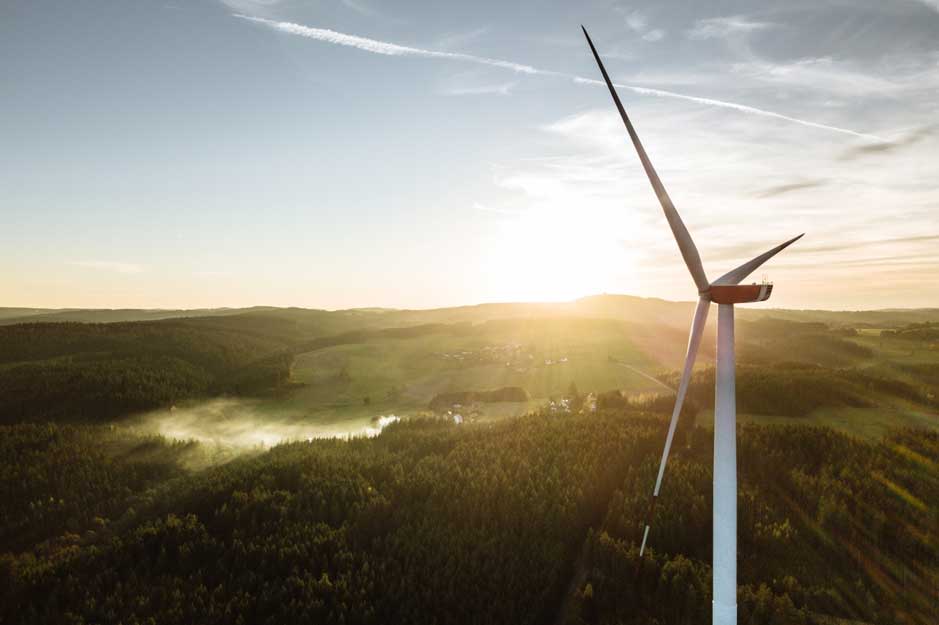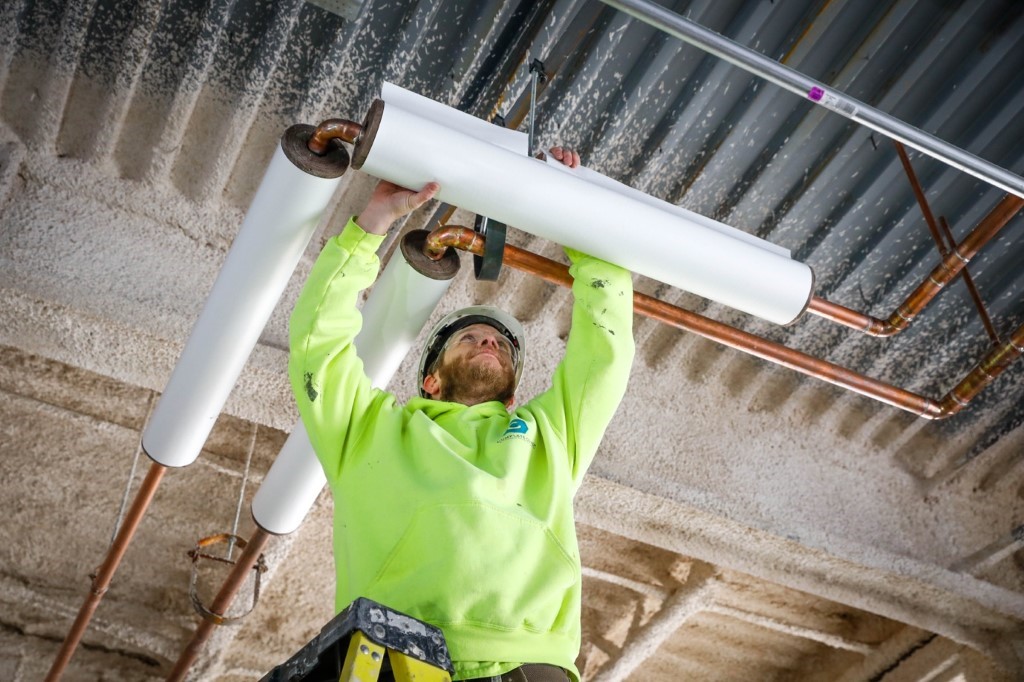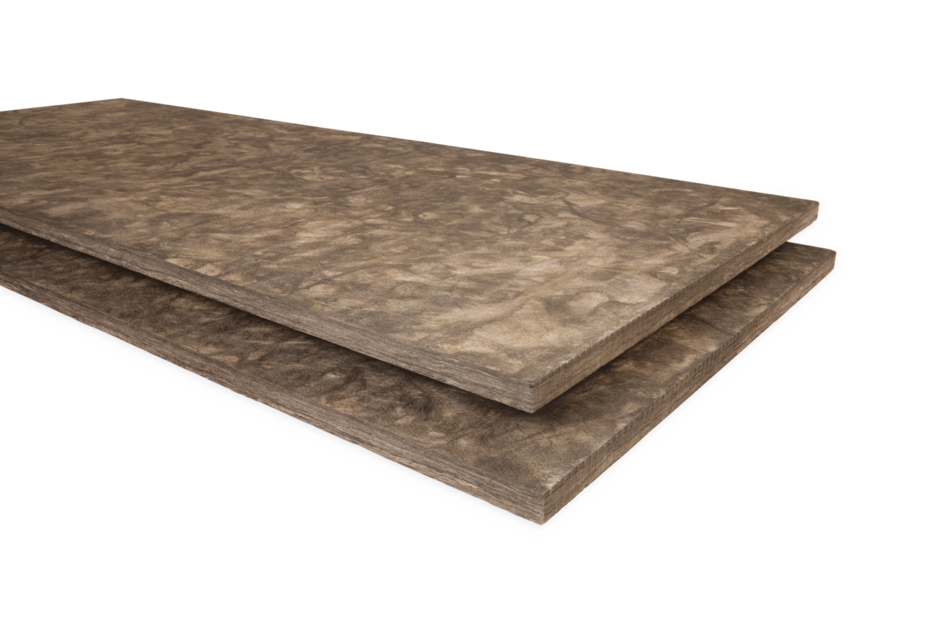Fiberglass Insulation: A Sustainable Insulation Solution

01/01/2019
Have a need for some thermal or acoustical Insulation? Wondering which product will be the most sustainable and eco-friendly to meet your needs? Well, look no further than one of the oldest insulants available, fiberglass insulation. Whether you are looking to reinsulate the attic of your personal home, designing a new home, erecting a metal building, or engineering a modern refinery, fiberglass insulation products not only offer high thermal and acoustical performance levels, but do so in a manner that is more sustainable than virtually any other mainstream insulation product available.
Why “Old School” Fiberglass is the Way to Go
Oh sure, there are newer insulation technologies available, and most of them are effective in the roles they are designed to play, but the old tried and true fiberglass insulation products can still outperform the newer products from a thermal performance perspective and do so with less environmental impact. How so? Well let’s talk a little about that. While the actual manufacturing of glass fibers remains virtually the same as it has for the last 80+ years, there have been significant inroads towards producing finished products that are designed to be sustainable and eco-friendly. For example, did you know that the fiberglass industry now produces its products by utilizing a raw material mix that consists of over 50% recycled glass? Not only does that reduce glass from the waste stream, but it saves a significant amount of energy used in the manufacturing process as well. It’s easier and less costly to re-melt glass than it is to produce it from sand. How much recycled glass is that for Knauf Insulation? Well, how about 26,000,000 bottles a month, every month! And, we would use more if they were available. Considering that one glass bottle yields 3,500 MILES of fiber for our process, just think how sustainable using recycled glass really is! So, we save energy and reduce waste when producing our products. Not a bad start towards producing a sustainable insulation product. And by the way, don’t take our word for it. The amount of recycled glass we use is certified by UL Environment…every year! Remember that 3500 miles of fiber per bottle? Want to help? It’s simple really. Drink more beer!
The Evolution of Fiberglass Insulation Manufacturing
Ten years ago, another significant, in fact an industry changing event took place that improved the manufacturing process and the finished products themselves. In 2008, Knauf Insulation pioneered the use of bio-based binders with the introduction of Ecose Technology®. Binders are used to bond the fibers together when producing batts, rolls, boards or pipe covering. The conversion to a bio-based binder was the most significant, green oriented and sustainable transition in the history of fiberglass insulation manufacturing. So much so that every fiberglass manufacturer has since made a similar conversion to more sustainable binder formulations. In short, Knauf eliminated the use of phenol/formaldehyde-based binders and replaced them with plant sugars as the binder base. Out with the petro chemical producers and in with the farmers if you will!
Knauf Invents Ecose Technology®
The end result…an improved, modern day insulation product that meets UL Validated standards as being formaldehyde free. Oh, and interestingly, that standard did not exist prior to Knauf inventing Ecose Technology®. Ecose was such a game changer that a new standard had to be written. Now that is moving the needle towards a more sustainable insulation solution! With the conversion to Ecose Technology®, Knauf again experienced the added benefit of reduced energy consumption in our own manufacturing process. Another double win…an improved and more sustainable insulation product manufactured and delivered to the market, while reducing the energy used to produce it. Eco-friendly? On both fronts!

How Environmental Awareness is Changing Fiberglass Insulation
With an ever-increasing focus on the environment in general, and specifically towards the products that are used in construction projects, the fiberglass insulation manufactures are at the forefront of this awareness. Through processes and programs such as exist within the United States Green Building Council, International Living-Future Institution, Living Building Challenge and others, there is a greater focus on transparency about the products used in construction than ever before. Where those products fit into the whole sustainability perspective is a top of mind consideration. For example, within the Living Future protocol exists the Declare Red List Free certification program. The Red List is a listing of the worst in class materials used in the construction industry as measured by health and safety risks to site workers, indoor air quality standards for building occupants and the like. Considering that many of the products listed have been used historically and consistently in the construction industry, committing one’s products for review and to be declared “Red List Free” is a significant step, and one that the fiberglass producers have embraced. Knauf Insulation led the way for this type of transparency within our industry and has more Red List Free products than does any other fiberglass producer, insuring Knauf’s position as a leader in the production of sustainable insulation products.
Increasing Industry Awareness
Other means of measurement are also growing in awareness and significance within the construction industry. Life Cycle Assessments, Product Category Rules and Environmental Product Declarations are not just “feel good” programs but establish an actual protocol for specifying and utilizing the most sustainable product solutions available. The requirements outlined in these programs impact: - Owners - Architects - Engineers - Manufacturers - Contractors Ultimately, this impacts the occupants of many projects being constructed today and are used to establish that products meeting those qualifications are safe to use in construction, are more sustainable and have minimal impact on the environment. In addressing these measurements, the fiberglass insulation industry has proven itself to be consciously aware of consumer awareness and concern regarding health and safety of its products and/or any potential environmental impacts from use of its products.

Products Produced by Fiberglass Insulation Manufacturers
The products produced by the fiberglass insulation manufactures are among the most studied and tested of all building products. Millions of dollars have been spent by the industry in order to ensure that its thermal and acoustical insulation products are safe to use. After years of research across the globe, the International Agency for Research on Cancer, the European Certification Board and the State of California through Proposition 65 have all exonerated fiberglass as a possible carcinogen. The glass fibers used in manufacturing thermal and acoustical insulations are classified as bio-soluble, meaning that they are absorbed by the human body and do not persist. So not only does the fiberglass insulation focus on sustainability, the environment and the transparency of its ingredients, but also supports continuing health research by investing millions of dollars in health research. No other insulation manufacturing organization is even close to that investment. The fiberglass insulation industry cares not only about the environment, but those that live within it as well. What is eco-friendlier than that?
Fiberglass Insulation Today
Fiberglass insulation products produced today are also more user friendly than ever before. While the basic theory of converting molten glass into glass fibers has been consistent for over eighty years, the finished products are vastly different than they were even twenty years ago. This improved fiber technology and the transition to sustainable bio-based binders has resulted in finished products with softer feel, more resilient fibers, less fiber breakage (which means far less dust), reduced skin irritation and better thickness recovery out of the bag, all of which lead to an improved experience when working with these products. Gone are the days of dusty, itchy and difficult products to work with. So, while the actual process itself may be old, the products being produced are entirely new.
Choose Eco-Friendly Fiberglass Insulation
So, what’s not to like? Environmentally engineered products that are safe and easier to use than ever before? An industry that willingly subscribes to the checks and balances required to produce sustainable insulation products that are environmentally safe? An industry that constantly focuses on reducing the energy consumed in producing its products? An industry continuously focused on improving its processes? An industry that converts trash to treasure? An industry that produces products that save energy and reduce carbon emissions in every application in which they are used? You’re right, there is nothing to not like. So, when considering the most sustainable insulation product for your next project, choose fiberglass insulation. It’s the sustainable choice. Visit our Sustainability page to learn more about Knauf Insulation’s sustainable products and practices.
 WHERE TO BUY
WHERE TO BUY
Find who carries Knauf Insulation products near you.
